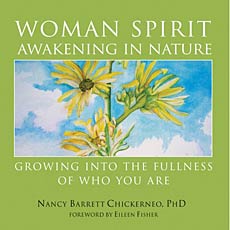"It's time for us to think seriously about balance. We typically use the word balance in a cavalier fashion: I need to get my tires rebalanced, I've got to balance my bank account, I'd like to start eating a more balanced diet. But the kind of balance I'm talking about goes much deeper. This balance is a considered, thoughtful counteraction to what the Hopis call koyaanisqatsi. You might recognize this term from the title of the 1982 film classic; it means 'life out of balance; a state of life that calls for another way of living.'
"Does that description fit your life in any way? When was the last time you said to yourself, 'There's got to be another way!' as you tried to run errands, return phone calls, check e-mails, make dinner, do the laundry. What about the promises you've made to yourself that you will take a break for yourself when . . . but the 'when' never arrives.
"In nature, if things get out of balance, they typically die. For instance, if I water my plants too much, or not enough, the lack of balance can be fatal. Too little or too much — even of a good thing! — can stifle a life. I think of the various plants in my house. The peace lily really likes water. If I forget to water it, it certainly lets me know. It slumps over and folds into itself. But as soon as I respond, it perks right back up. Then there are my orchids. Because of their beautiful, long-lasting cascades of flowers, you might think they need a lot of water to keep the show going. This is not true. These orchids require very little water and care to enhance their lives, and I would hurt, maybe even kill them, with over-watering.
"Just as each plant species has different needs for its growth, so, too, does each of us have different needs at different times. The key is to find the balance that works for us. Just as nature honors a balance between wet and dry, hot and cold, predator and prey, night and day, asleep and awake, it is vital to our mental, physical, and spiritual health that we find the balance that is best for our lives. And since nature is such an expert, what better teacher could we have?
"The midwestern prairies provide a mini-lesson — or, more accurately, given the size of the prairie, a magnified lesson — on the subject of balance. When it comes to water needs, most of the prairie grasses and native wildflowers blossom or grow dormant depending on the available moisture. When there is plenty of rain, they produce abundant foliage and flowers. When there is a drought, they rely on their extensive underground root networks to seek out moisture, and they remain in a semi-dormant state to conserve their resources."
